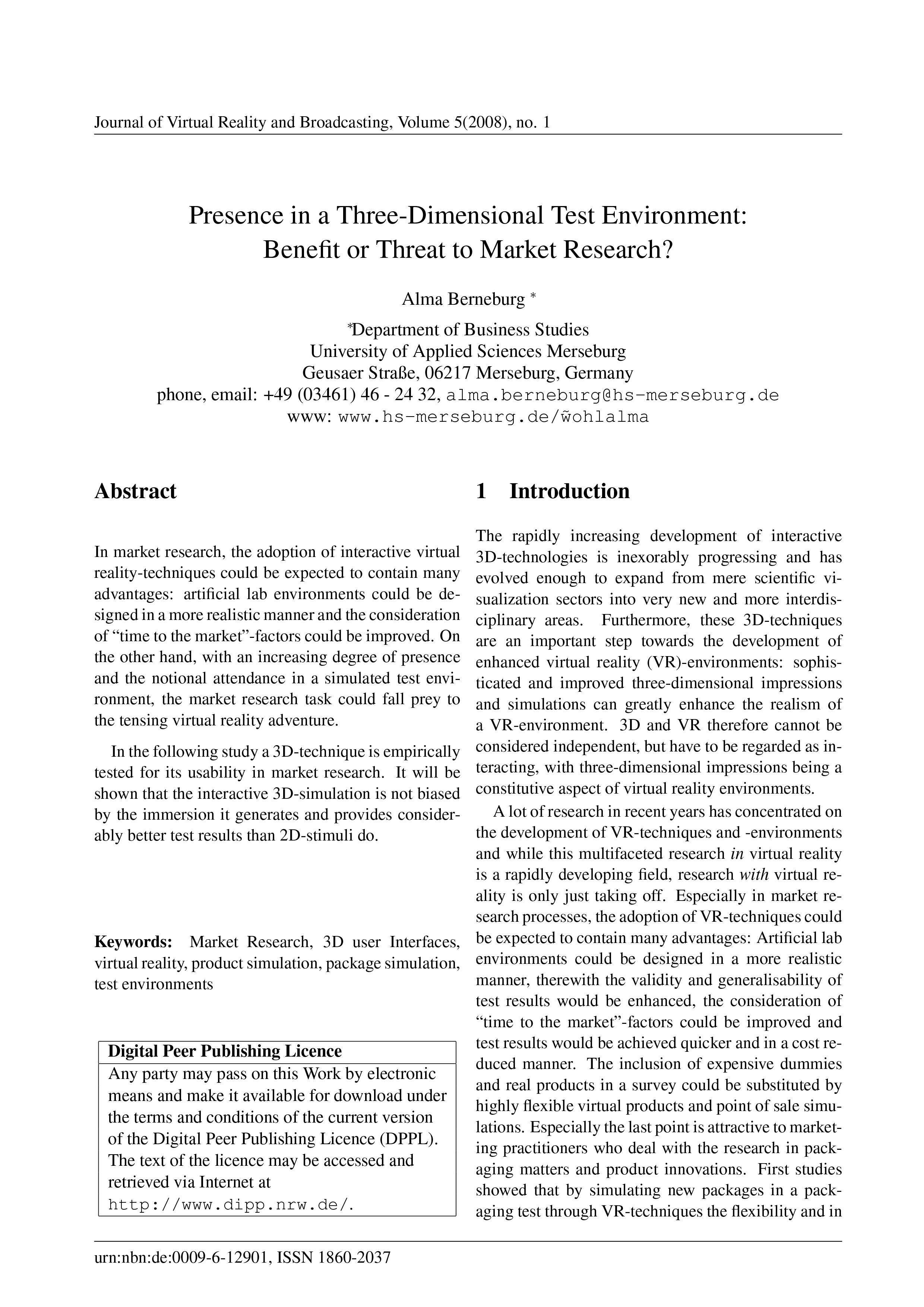Presence in a Three-Dimensional Test Environment: Benefit or Threat to Market Research?
DOI:
https://doi.org/10.20385/1860-2037/5.2008.1Keywords:
3D user Interfaces, Market Research, package simulation, product simulation, test environments, virtual realityAbstract
In market research, the adoption of interactive virtual reality-techniques could be expected to contain many advantages: artificial lab environments could be designed in a more realistic manner and the consideration of “time to the market”-factors could be improved. On the other hand, with an increasing degree of presence and the notional attendance in a simulated test environment, the market research task could fall prey to the tensing virtual reality adventure. In the following study a 3D-technique is empirically tested for its usability in market research. It will be shown that the interactive 3D-simulation is not biased by the immersion it generates and provides considerably better test results than 2D-stimuli do.
Published
2008-02-29
Issue
Section
Articles





